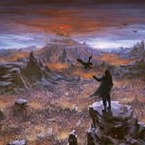
My name is Alex Truell, and for over 2 years now I've been the editor for the Rathe Times. I'm a casually competitive player currently in the midst of transplanting a Flesh and Blood scene to a new shop in Oshkosh, WI.
Strategically, I try not to follow trends, instead fixating on cards and tactics just outside the mainstream.
I view this game through the lens of a player who cares about the competitive environment, but doesn't have to live in it; an optimist who loves the game, but can take a step back to critique it; and a deckbuilder who revels in novelty.
Thoughts and Baubles is an editorial space for the Rathe Times, where I discuss the game and respond to the community.
Patterns Were Made to be Broken
TCG fans love to find patterns where perhaps they don't exist. And LSS loves to subvert expectations. Nowhere is this more clearly demonstrated than spoiler season.
Take Tales of Aria - or, as it was thought to be titled at the time, 'Kingdoms'. WTR, ARC, and MON had established a precedent that draftable sets would feature 4 different heroes; and while Monarch had shaken things up by introducing talents, the expectation was still that there would, perhaps, be two talents that the heroes were divided between. Throw in some generic cards and you've got a set.
Instead, Tales of Aria featured three heroes, who all shared the Elemental talent but with different affinities. And those affinities crossed over between them, meaning every talent card fit 2 out of 3 heroes, instead of only half of them. Did I mention there were no generics at all?
But Everfest was a supplemental set. And it did what supplemental sets do, according to CRU: it gave every class new cards.
Uprising followed the new 3-hero model created by Tales of Aria. It was set in Volcor; and as Tales had established by re-featuring Guardian, we could expect the class previously shown from that region to make an appearance. Only the Wizard in UPR wasn't from Volcor, and didn't sport the Draconic talent of the region. She was from Aria- and she had already debuted in Everfest!
But Dynasty was a supplemental set. And it did what supplemental sets do, according to CRU and EVR: it gave every class new cards. (Wait, wasn't there supposed to be another draftable set first? Supplemental sets were every 3rd set. And there's a new class here?)
Outsiders stuck to the 3-class model, but asked why we were limiting ourselves to just one hero per class. It also brought back Azalea and Katsu as the adult heroes for Ranger and Ninja. But Ranger also got Riptide. And Ninja re-featured Benji, but only young. And over in Assassin, we brought back the character Arakni, but with a different version, and only young. And also introduced Uzuri. What?!
"But Dusk Till Dawn is a supplemental set. And it will do what supplemental sets do, right? It'll give every class new cards?"
It did not.
Dusk Till Dawn = Monarch Till Morning?
Dusk Till Dawn is a continuation of Monarch. It's as straightforward as that. Which fits the description of 'supplemental' just fine, only we haven't defined 'supplemental' in those terms before. It's so direct a follow-up that they're celebrating the release of DTD with MON draft events.
It's been correctly pointed out that, due to its release during the pandemic, Monarch never got its time in the sun, and this provides players the opportunity to enjoy a Monarch draft as it was intended. But there's much more at play with this second impression, the sum of which makes a strong case for what they've decided to do with Dusk Till Dawn.
For many of us, Monarch will always be associated with the crash of the FAB speculation boom. During preorders, boxes of first edition were being sold for as much as $600 each. We'd only recently discovered how scarce Alpha Welcome to Rathe was, and were starting to get the sense that Arcane Rising and Crucible of War 1st Editions were also meteoric investments. Speculation was that Monarch could do the same, and anyone selling it for MSRP was giving away money. Reality set in quickly and harshly; the days of quick flips for massive profits were over.
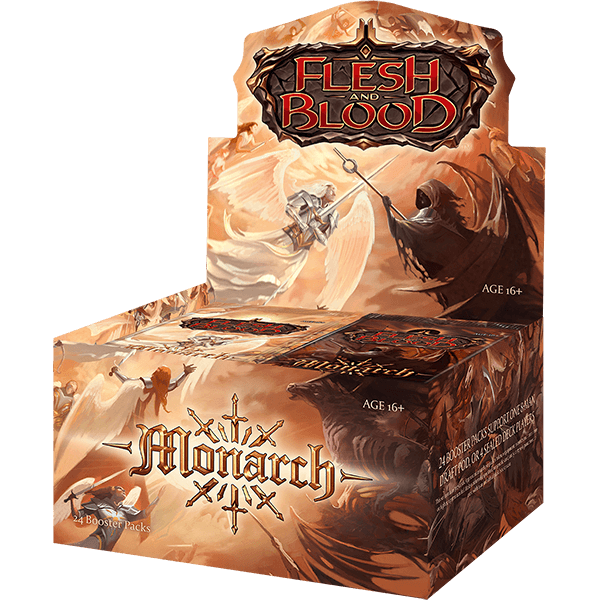
Many fans took a major financial hit with this, and it wasn't just the investors who didn't get realize their potential profits. The secondary market was full of Monarch, and cards couldn't hold value in the face of massive supply.
These weren't strikes against Monarch itself, mind you. But the set suffered collateral damage from being associated with them.
For an interesting look back at the Flesh and Blood market during this era, I recommend reading Ada's State of the Market reports from that time. Here's a starting point.
An Old Set in a New Light
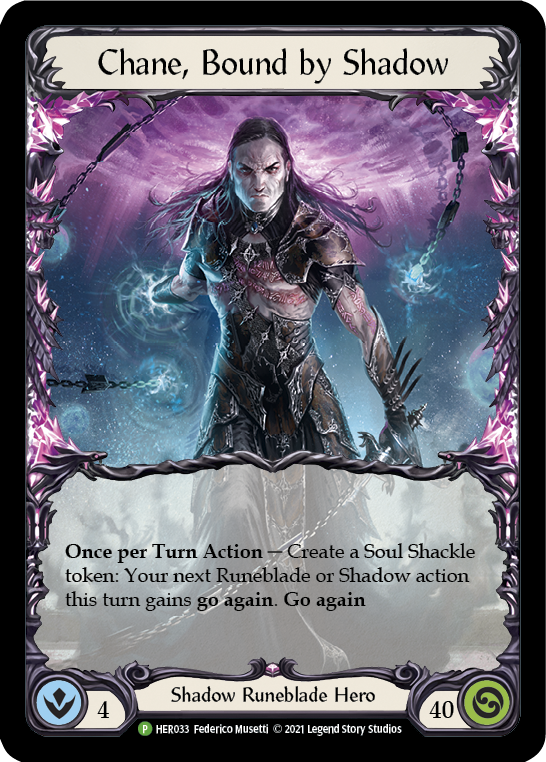

Monarch represented a major step forward in the complexity of the game, and two of its heroes - Chane and Prism - pushed the envelope perhaps more quickly than we were ready for. Chane stretched the combat chain to its breaking point, drawing power from a banished zone that acted as an extension of his hand. Prism began by pushing the game's math to its breaking point, offset by the 'phantasm' liability that seldom felt like it held the class back. In time, players shifted focus from heralds to auras; and it was in unlocking the full potential of the aura board state that Prism ultimately become the dominant force that would go on to join Chane in Living Legend.
The skewed power of these two heroes were a black eye on Monarch's balance and overall design. But as time has passed and game design has evolved, many other decks have reached the levels that these heroes held. Which isn't to say that Chane wouldn't be a meta contender in today's game, but that many decks now have the tools to rival - or counter - his performance.
After the initial wave of sealed events have passed, Monarch's re-introduction will be into a vast and varied meta, with Dusk Till Dawn to expand on it. Boltyn and Levia have the chance to make better impressions with additional support and an entirely different meta. Prism's revival with a new hero power and a new strategic focus give the Light Illusionist pool an entirely different look. And the absence of Chane - replaced wholesale by Vynnset, a very different Shadow Runeblade - requires re-evaluation of everything.
In other words, Monarch is interesting again. And it's probably not broken. And maybe, just maybe, we can enjoy Prism's presence in the meta this time, and stop making jokes about Boltyn.
The Case for More Lore
If Welcome to Rathe and Arcane Rising served as introductions to the game as a whole, Monarch really brought the full picture to players. The introduction of talents is just one piece of that, with another being the idea that multiple heroes can exist within a single class. And then there was the storyline. Largely absent from the original sets, Monarch had a clear narrative throughline that not only fleshed out regions of Rathe, but also saw our heroes interacting with each other. I used to ask just what the narrative circumstances were that lead to the battles we played out on the tabletop; at least within the confines of Monarch, we now had an answer of sorts.
Monarch represented a shift to the real story of the game. And since that time, the only thing that's been reliably predictable is that our draftable sets have continued to tell stories that develop the identity of regions and increase the connectedness of our heroes to one another. Meanwhile, supplemental sets have acted as detours within the regions. Everfest showed us the carnival life that makes Aria famous and set the tone for its disparate heroes to encounter each other. Dynasty fleshed out the conflict within Volcor, while also covering the moment that conflict boiled over: the assassination of the Emperor.
But where was Monarch's supplemental set? Following a different release cadence, Tales of Aria proceeded after Monarch without giving room for expansion. And so we met all the actors and set the stage, but saw nothing of the epic battle between Light and Shadow. Solana remained undeveloped; the Demonastary, opaque.
And while it's true that Dusk Till Dawn has now stranded Outsiders in the same way, it sorta feels like Dynasty was Outsiders' supplemental set in the way that we followed Arakni back from their regicide in Volcor. Similarly, revisiting Azalea and Katsu made Outsiders feel like a continuation of lore found in lots of places. Really, Outsiders is just... kinda weird itself.
This lore-based set design is important, because while tight gameplay and beautiful artwork will make inroads, it's ultimately storytelling that gets people invested. Players have done some heavy lifting in this regards, expanding on the lore with their own head canons and filling their heroes with personality that stems from the collective fandom more than any official source. The collective excitement over Levia's final form goes so much further than simply wanting Shadow Brute to be playable.
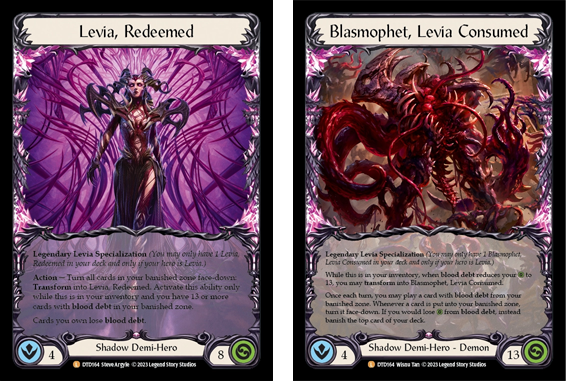
It does make me concerned that Chane was omitted, however. I have never been much of a Chane player myself, so I don't know if the fandom around him was specifically attached to the character or simply the gameplay. Regardless, Vynnset is not Chane, not in persona nor in strategy. It shouldn't be assumed that former Chane players will gravitate toward this Shadow Runeblade simply because the card pool is the same. Perhaps Chane's story is done, or perhaps his strategic identity simply didn't fit the environment LSS wants to foster right now. It will be interesting to see if he ever returns, and under what circumstances.
The Time is Right
Dusk Till Dawn once again changes the formula and makes us rethink what a Flesh and Blood release can be. In my opinion, the time is right for this. In fact, the releases of 2023 have worked in concert to show that LSS is equally concerned with its history as its future. Outsiders was essentially designed with a razor-focused intent to update Azalea and Katsu with the benefit of modern design sensibilities and learned lessons.

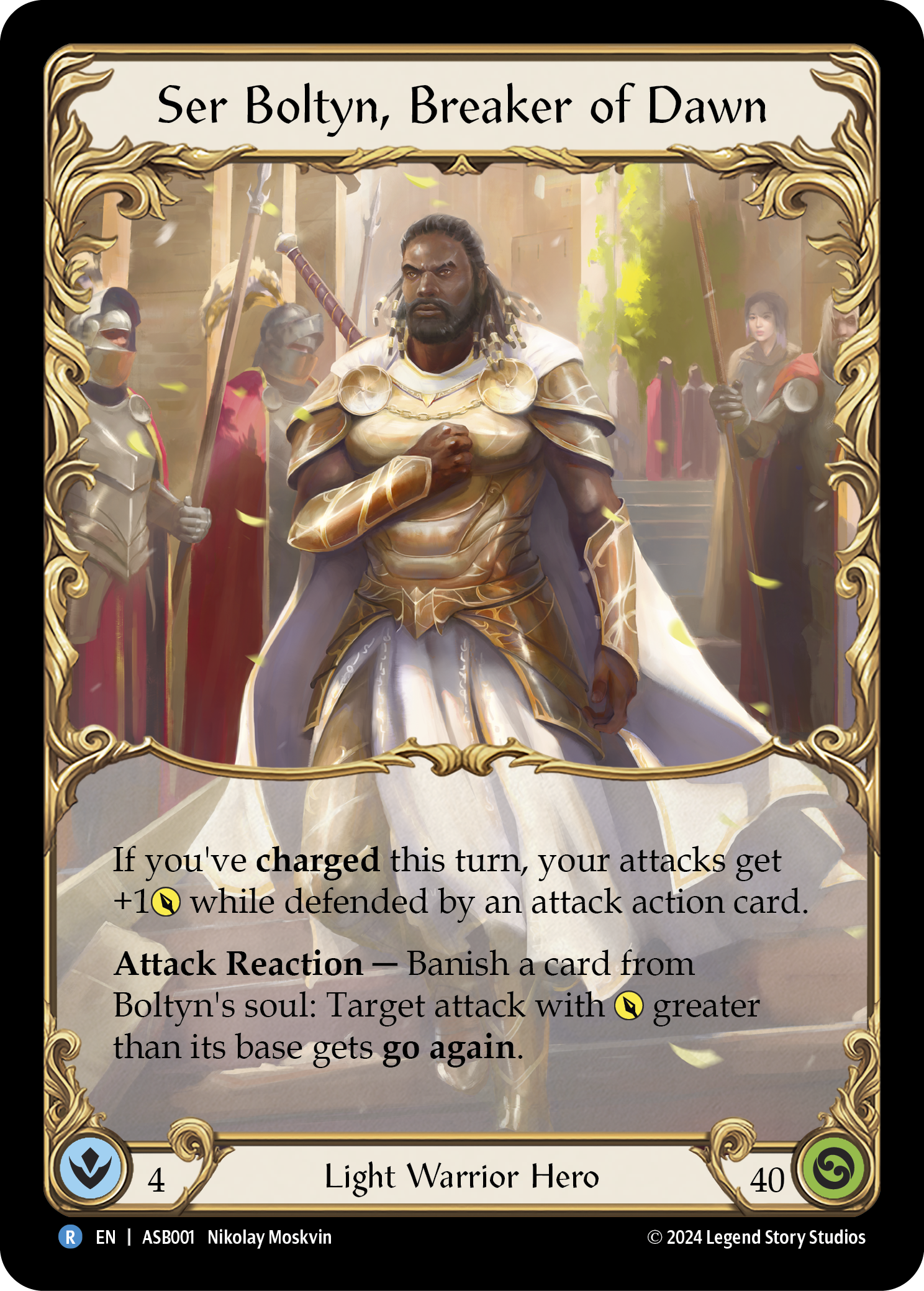
Similarly, DTD sets out to, essentially, fix everything that's wrong with Monarch. Like Azalea, Boltyn and Levia have under-performed since their debut; and due to their close ties to their talents, neither have received much support from card pool additions to their classes. Prism's return shows that the fandoms matter to them, offering hope to fans of other Living Legends.
With these two sets, every class and talent is now viable. (I almost went so far as to say every hero is now viable, but Arakni is hard to justify in light of Uzuri.) This is huge for the premise and the promise of the game: that you can find the hero that resonates with you, work hard at perfecting your gameplay, and find success. More than anything else, the player base desperately wants this to be true.
Moreover, LSS has done this in the most exciting ways possible. The Rangers found much-needed improvement not solely though new, powerful cards for their decks, but also through the unique addition of the Quiver equipment piece - essentially, a heavily thematic and modular addendum to their hero powers. Levia found redemption through a late-game hero card accessed via transformation, which adds both to the story of the character and the gameplan of the deck. In both instances, the fix felt on-brand and effective; it made the targeted heroes stand out while respecting what fans loved about them to begin with.
The addition of Talents and the proliferation of new heroes carried with it an uncomfortable undercurrent that, perhaps, Flesh and Blood would move beyond those early heroes, rendering what came before irrelevant or phasing out old heroes in favor of 'talented' versions of them (like Bravo, Star of the Show). Hell, Dorinthea's Light affinity has already been heavily suggested in the lore; Boltyn could have easily become an awkward footnote in the history of Light Warriors. Instead, we get a concerted effort to boost Boltyn with a suite of cards that deliver just what he needs.
What I'm taking away from this is that LSS is as committed to these heroes and these decks as we are. They aren't producing new sets with the sole intent of moving the latest product - the kind of strategy that often leads to power creep and forced irrelevance. They're legitimately aiming to improve our experience with each new addition; and they're well aware that sometimes the best way to move forward is to look back.



